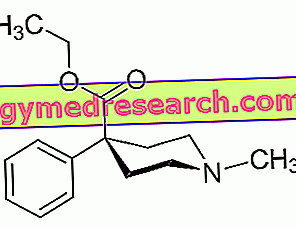
What is Xeristar?
Xeristar is a medicine that contains the active substance duloxetine, available in gastro-resistant capsules (white and blue: 30 mg; green and blue: 60 mg). "Gastroresistant" means that the content of each capsule passes unharmed in the stomach and is broken down only into the intestine. In this way the active ingredient is not attacked by the acids contained in the stomach.
What is Xeristar used for?
Xeristar is indicated for the treatment of adults suffering from:
- major depression episodes (periods of severely depressed mood that last at least two weeks);
- pain due to diabetic peripheral neuropathy (ailments of the nerve endings in the limbs, which can affect patients with diabetes);
- generalized anxiety disorder (chronic anxiety or nervousness due to issues related to daily activities).
The medicine can only be obtained with a prescription.
How is Xeristar used?
In the treatment of severe depression, the recommended dosage of Xeristar is 60 mg once a day. The therapeutic response is usually observed after 2-4 weeks. It is recommended to continue the treatment for a few months in order to avoid relapses.
In the treatment of diabetic neuropathic pain, the recommended dose is 60 mg a day, but some patients may need to be given a higher dose of 120 mg a day. Treatment response should be evaluated after 2 months of treatment. If the treatment is effective, the benefit of the treatment must be re-evaluated at least every three months.
In the treatment of generalized anxiety disorder, the recommended starting dose is 30 mg once a day, but it can be increased to 60, 90 or 120 mg, depending on the patient's response. The majority of patients should take 60 mg a day. Patients who also experience episodes of major depression should start with 60 mg once a day. It is recommended to continue treatment for several months to prevent the reappearance of the disorder.
Xeristar can be taken with or without food. The dose should be reduced gradually when treatment is stopped.
How does Xeristar work?
The active substance in Xeristar, duloxetine, is a combined serotonin and noradrenaline reuptake inhibitor. It works by preventing the neurotransmitters 5-hydroxytryptamine (also called serotonin) and Noradrenaline from being reabsorbed by nerve cells in the brain and spinal cord. Neurotransmitters are chemicals that allow nerve cells to communicate with each other. By blocking their reabsorption, duloxetine increases the number of neurotransmitters in the space between nerve cells, increasing the level of communication between these cells. Since neurotransmitters are involved in maintaining a good mood and reducing the sensation of pain, the inhibitory action of duloxetine can help alleviate the symptoms of depression and neuropathic pain.
How has Xeristar been studied?
Regarding the treatment of major depression, Xeristar was examined in seven main studies involving a total of 2 256 patients. Of these, six studied the effects of Xeristar in the treatment of depression, while the seventh examined its effects as a relapse prevention therapy. In treatment studies, Xeristar was compared with placebo (a dummy treatment) for up to six months. Some studies have also compared Xeristar with paroxetine (another antidepressant drug). The main measure of effectiveness was the change in depressive symptoms, measured on a standard scale. The relapse-based study compared Xeristar therapy and placebo treatment over six months in patients who had already reacted to a treatment with Xeristar, in order to examine the time interval elapsed before the reappearance of the symptoms.
Regarding the treatment of neuropathic pain, Xeristar was examined in two 12-week studies in 809 diabetic adults who had complained of daily pain for at least six months but were not suffering from major depression. Three different doses of Xeristar were compared with placebo. The main measure of effectiveness was the change in pain severity from week to week, measured by patients on an 11-point scale and recorded daily in their diaries.
For the treatment of generalized anxiety disorder, Xeristar was compared with placebo in four studies involving a total of 1 908 patients. The main measure of effectiveness was the reduction of symptoms after nine to ten weeks, measured on a standard scale for anxiety. Some studies have also compared Xeristar with venlafaxine (another treatment for generalized anxiety disorder). A fifth study compared Xeristar with placebo in preventing recurrences in 429 patients who had initially responded to Xeristar, evaluating the time elapsed before symptoms returned.
What benefit has Xeristar shown during the studies?
In the treatment of major depression, Xeristar was more effective than placebo in reducing the symptoms of depression in four out of six studies, while its efficacy was not demonstrated in the other two studies. Despite inconsistencies between the various studies in terms of results obtained with the different dosages, in the two studies in which Xeristar, taken at a dose of 60 mg once a day, was compared with placebo, the symptom scores decreased about 9 points in patients treated with Xeristar eight weeks after starting therapy (initial score: about 21 points). This should be compared with the reduction of about 6.5 points observed in patients treated with placebo. Xeristar has been shown to have efficacy on symptom score similar to that of paroxetine. In subjects treated with Xeristar who take dosages of 60 mg once a day, relapses occurred at longer time intervals; 17% of patients reported a reappearance of symptoms compared to 29% of subjects treated with placebo.
Regarding the treatment of diabetic neuropathic pain, Xeristar taken at a dose of 60 mg once or twice a day was more effective than placebo in reducing pain. In both studies, pain relief was reported from the first week of treatment and for up to 12 weeks; patients treated with Xeristar recorded scores lower than 1.17-1.45 points compared to subjects treated with placebo.
For generalized anxiety disorder, Xeristar was more effective than placebo in treating the disorder and preventing its recurrence. In the treatment studies, the anxiety score was around 26 points at the start of the studies, falling by about 13 points in the patients taking Xeristar and about 9 points in the placebo patients. Xeristar had a similar effect on anxiety scores compared to venlafaxine. The time elapsed before the symptoms reappeared was higher in patients treated with Xeristar: after six months, 14% of patients taking Xeristar experienced a relapse compared to 42% of patients treated with placebo.
What is the risk associated with Xeristar?
The most common side effects expected with Xeristar (seen in more than 1 in 10 patients) are nausea (feeling sick), headache, decreased salivation, drowsiness (drowsiness) and dizziness. In most cases these effects are mild to moderate, occur at the beginning of treatment and gradually diminish. For the full list of all side effects reported with Xeristar, see the Package Leaflet.
Xeristar should not be used in people who may be hypersensitive (allergic) to duloxetine or any of the other ingredients. Concomitant use of Xeristar with monoamine oxidase inhibitors (another type of antidepressant drug), fluvoxamine (another antidepressant drug) or ciprofloxacin or enoxacine (types of antibiotics) is contraindicated. Xeristar should not be used in patients with certain liver disorders or in patients with severe renal insufficiency. In patients with uncontrolled hypertension, Xeristar therapy is contraindicated, since it may expose these subjects to a potential risk of hypertensive crisis (sudden and dangerous rise in blood pressure).
As with other antidepressant drugs, cases of suicidal thoughts and behaviors have been reported in patients being treated with Xeristar, especially in the first few weeks of antidepressant therapy. Patients being treated with Xeristar who experience anxiety thoughts or feelings at any time should contact their doctor immediately.
Why has Xeristar been approved?
The Committee for Medicinal Products for Human Use (CHMP) has determined that Xeristar's benefits are greater than its risks for the treatment of episodes of major depression, diabetic peripheral neuropathic pain in adults and generalized anxiety disorder and therefore recommended the granting of the marketing authorization for the product.
More information on Xeristar:
On 17 December 2004, the European Commission granted Xeistar a marketing authorization valid throughout the European Union to Boehringer Ingelheim International GmbH. The marketing authorization was renewed on 17 December 2009.
The full EPAR for Xeristar can be found here.
Last update of this summary: 12-2009.



